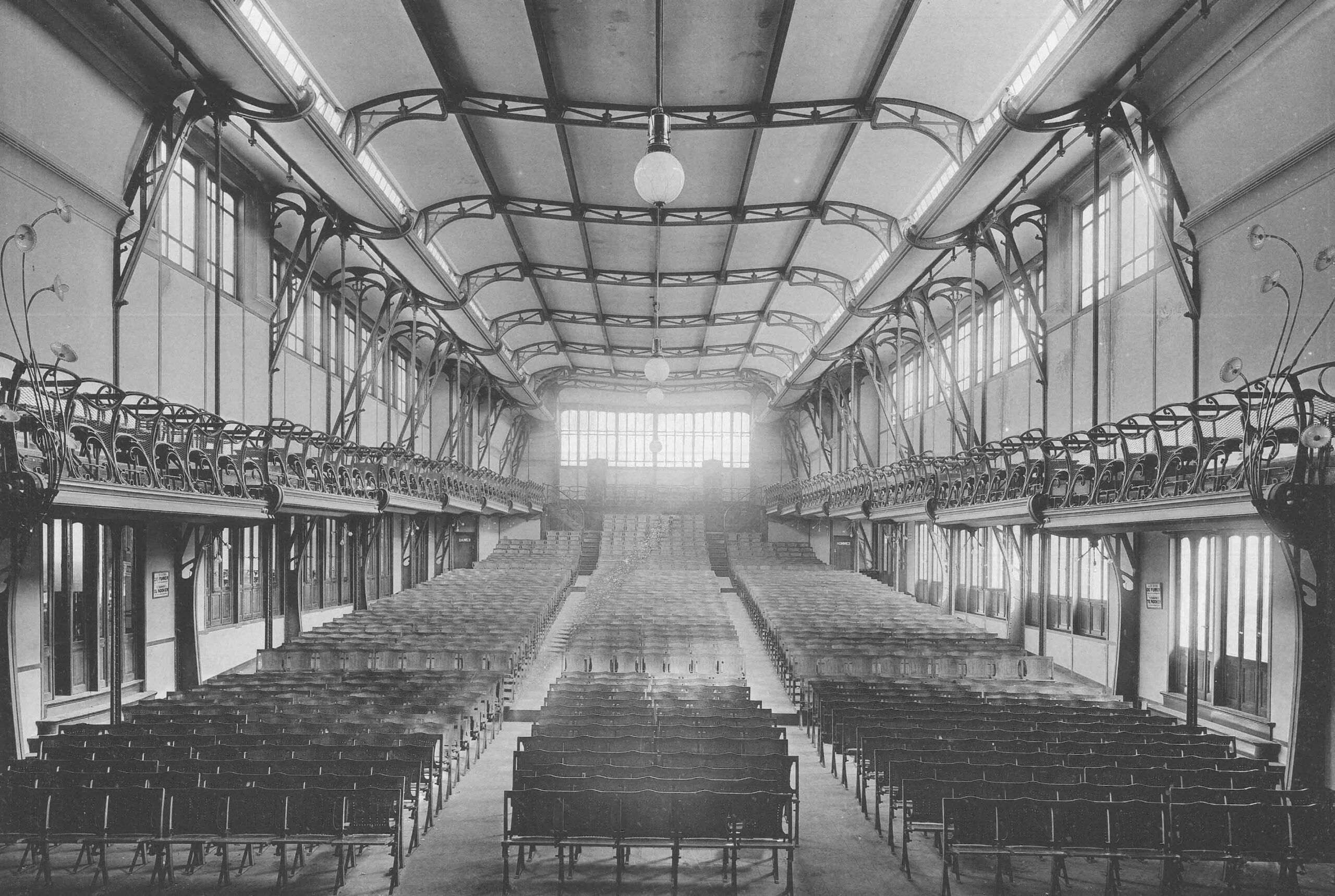Last chance: The 14th Architizer A+Awards celebrates architecture's new era of craft. Apply for publication online and in print by submitting your projects before the Final Entry Deadline on January 30th!
The potential for making an architectural statement with solar PV panels, particularly in the form of a canopy, has been availed by architects for a while now. There is the often-photographed monumental solar canopy at the Parc del Fòrum in Barcelona, Spain, from way back in 2004. More recently, Gensler Architects have built an enormous hypostyle portico covered in solar panels at the Fifth + Tillery office in Austin, Texas. These sweeping expanses of glass and silicon on exposed latticework structures are naturally dramatic and expressive while providing a dappled shade or shelter from the rain.
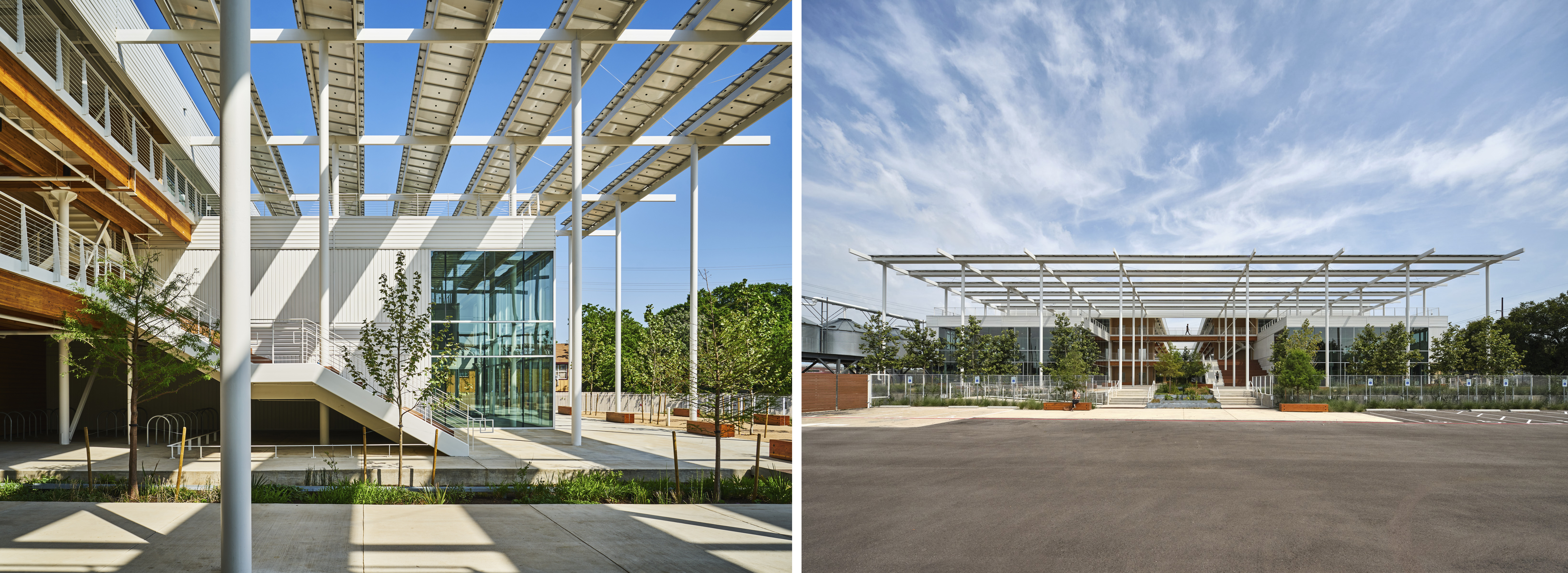
Fifth + Tillery by Gensler, Austin, Texas
On residential houses, however, the pattern is to simply stick solar panels dumbly on the roof in any way they may fit. Newly built houses abound where exceptional care has been exercised over every detail and proportion, no expense spared on materials — except for the ill-shaped clump of solar panels laid out across the roof. It’s as if there is an unspoken agreement not to notice. But you can’t look away: there they are in full sun atop the house: ugly, unloved, visually jarring.
Renewable Energy Tartan
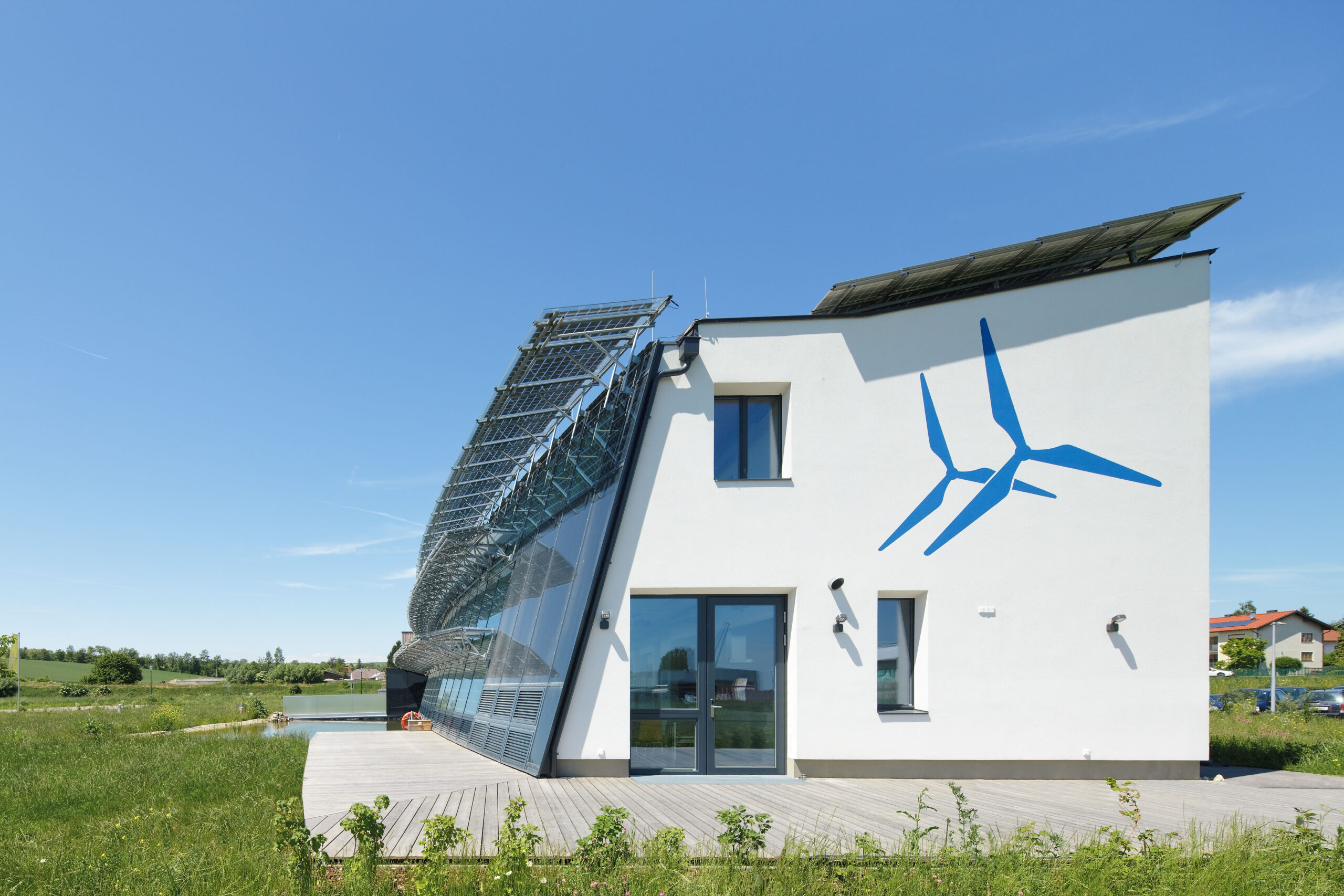
Ernstbrunn Windkraft by Architekturbüro Reinberg ZTGesmbH, Energiewende Platz, Korneuburg, Niederösterreich, Austria
It’s a shame because solar canopies, awnings, eaves, and screens are an opportunity to add construction details and architectural rhythm that is inherent in the trellis-like structures supporting solar arrays. The cross-crossing supports of various thicknesses combined with a grid of individual solar cells naturally form a tartan plaid with layers of depth and visual interest. Although the panels can be mounted at any angle or even flat, the most efficient orientation is always a south-facing slant that can be a strong visual counterpoint to the normally rectilinear forms of a typical house.
Solar Photovoltaics Everywhere
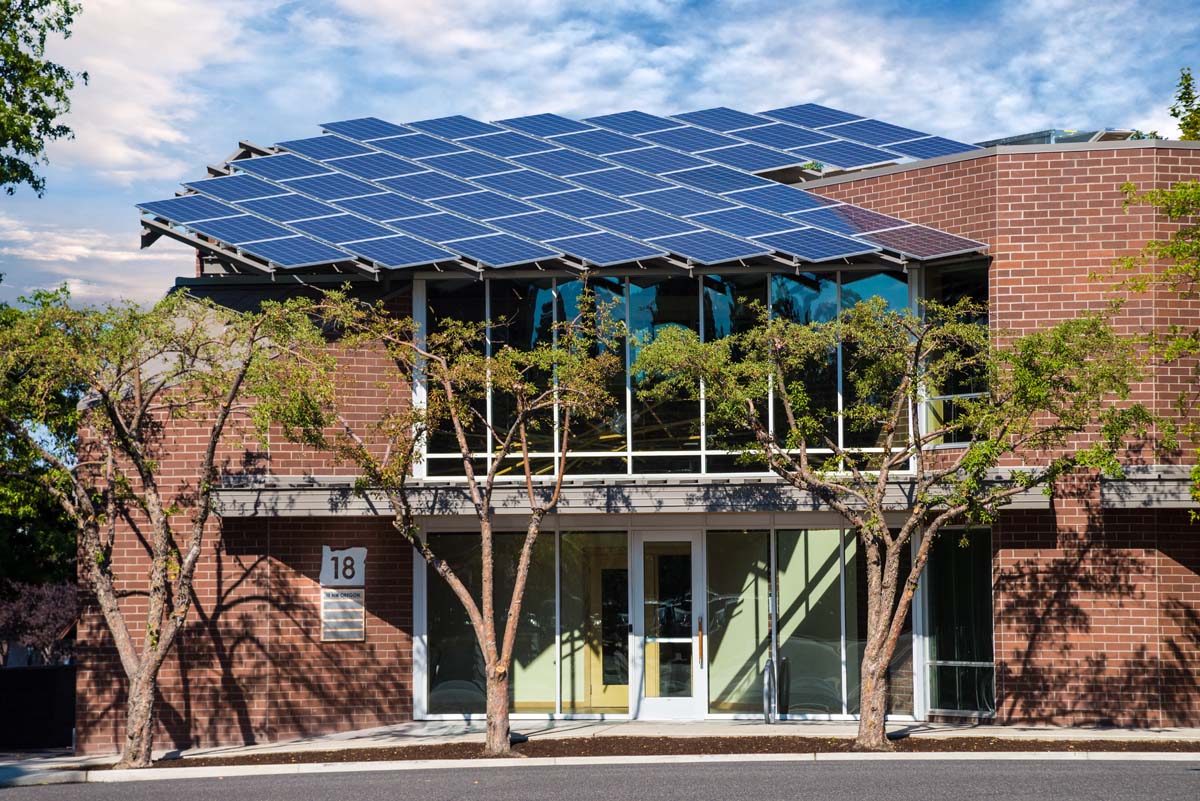
Sustainable Office Building Remodel by BLRB Architects (formerly Ascent Architecture & Interiors), Bend, Oregon, US.
Solar canopies can power a house and provide well-modulated shade at the poolside, or they can float over the house, shading the roof while adding visual interest to the façade, as in this application of solar panels on an office building façade, with the array jauntily tipped over the front of the building at a skew angle. Panels can be integrated as a carport roof, a door awning, an eave line, skylights, an atrium roof, windows, a deck railing, a brise-soleil, a screening element, or even a garden fence. So it’s a wonder that they almost always just get stuck on the roof in the most unsightly possible way.
A shade trellis is an often-used feature when designers want to make an attractive sheltered backyard space. When made of solar panels, it can not only provide modulated shade but also rain cover. But any surface that receives sunlight can, theoretically, be made into a solar electric collector. Yet, few to no examples of solar panels are being used for features like railings or screening elements in residential architecture.
A solar eave will provide the shadow line of a traditional eave and the opportunity to de-materialize the eave as it reaches its edge. Combining bi-facial panels with clear glass panels offers another opportunity for modulation.
Lots of Choices
Manufacturers offer a wide variety of specialized solar panels just for solar roofs, canopies, and walls. Bi-facial panels that are glass on both faces are the most commonly used. These panels contain an array of dark silicon cells sandwiched between two sheets of glass. The silicon cells can be arranged at various spacing to adjust the amount of opaque versus clear area. Amorphous silicon glass panels present a uniform look without tiled silicon cells and can be made in various colored tints. Panels are also available in different sizes and form factors as well. Some panels can even be combined with windows and skylights. What if a building’s cladding material were entirely made of solar panels? More power to it! Added to the variety of panels is the variety of off-the-shelf mounting systems available, from minimalist to water-tight.
There is no excuse not to make solar photovoltaics part of the architecture. So, architects and designers, it’s time to embrace solar PV as part of the design and not just an unsightly piece of electrical equipment mounted on the most visible part of the house!
This article was written in collaboration with Californian architect Ian Ayers.
Last chance: The 14th Architizer A+Awards celebrates architecture's new era of craft. Apply for publication online and in print by submitting your projects before the Final Entry Deadline on January 30th!
Top image: Solar Pergola, Barcelona (Parque del Forum, Photo by Max D via Flickr
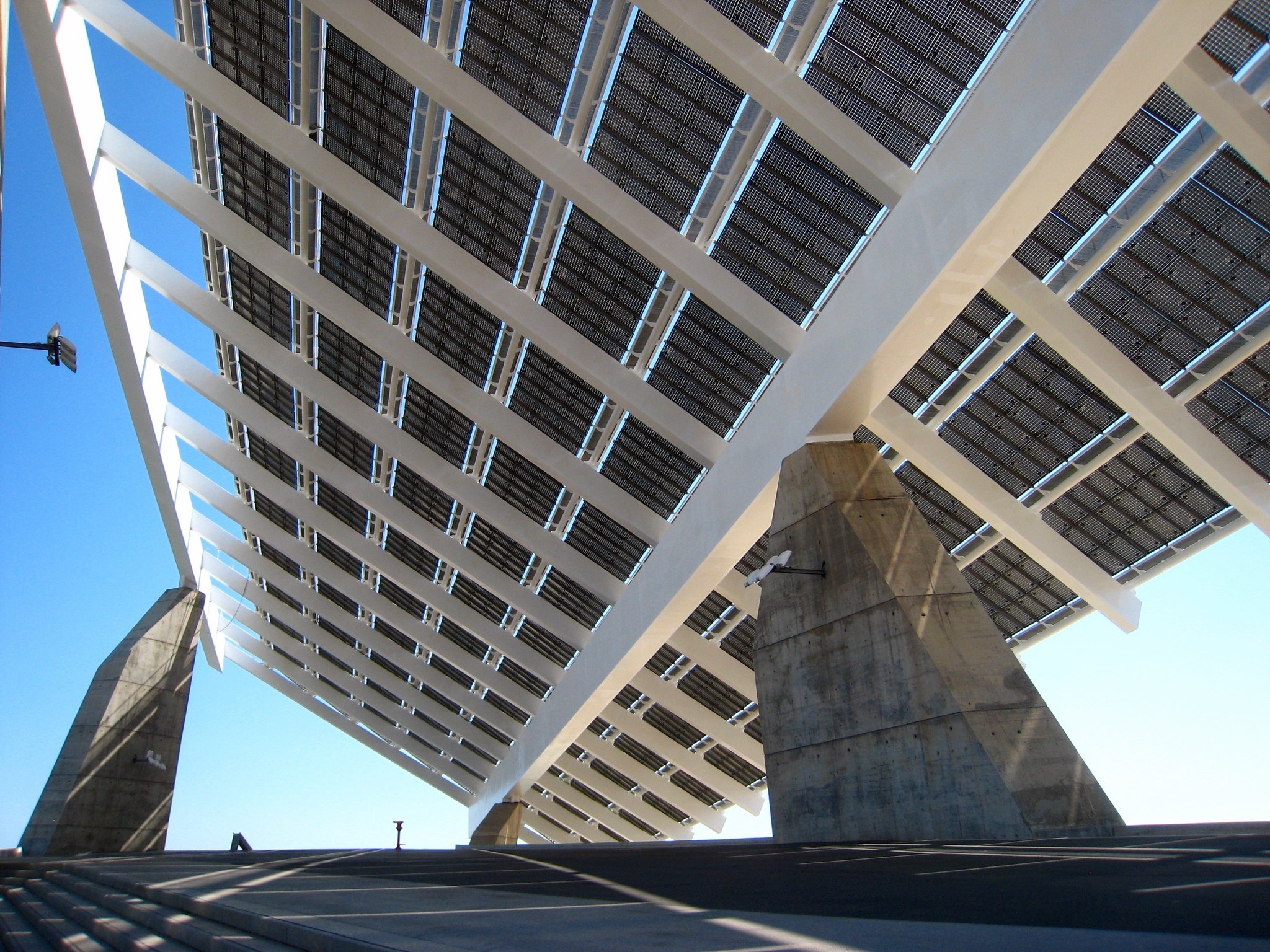
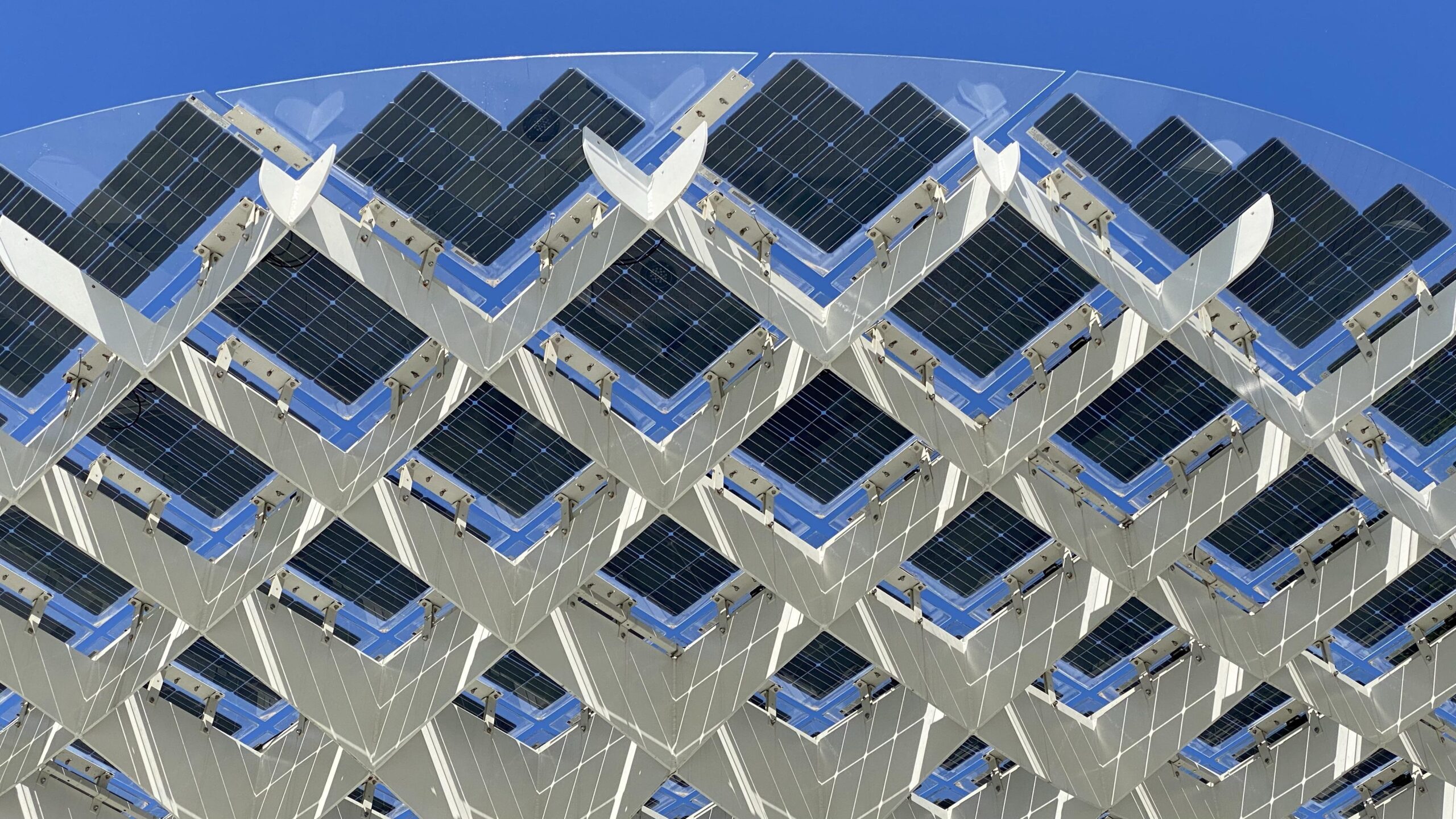
 Sustainable Office Building Remodel
Sustainable Office Building Remodel  The French Laundry
The French Laundry 